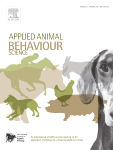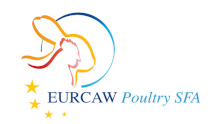Document type : pre-publication online of scientific article in Applied Animal Behaviour Science
Authors: Hannah R. Golightly, Jennifer Brown, Renée Bergeron, Zvonimir Poljak, Yolande M. Seddon, Terri L. O'Sullivan
Preview: The impact of transport on weaned piglet welfare has been evaluated under experimental conditions, but data generated from studies conducted under commercial conditions and incorporating variation in time between weaning and transport are lacking. The purpose of this research was to describe the behaviour patterns, changes in weight and signs of injury observed in a subset of piglets from two Canadian commercial swine systems employing different weaning and transport practices. The Western system (W) weaned piglets up to six days prior to long (≥30 h) transport, while the Eastern system (E) weaned piglets immediately prior to short (≤3 h) transport. Four transport events for both systems were observed under summer conditions. Behaviour of the first pen of piglets placed after transport was recorded at arrival (T1a), while a subset of the transported piglets enrolled prior to transport (E: n=200, W: n=240) had weights collected, injury assessments completed, and behaviour video recorded on the day of arrival (T1b) and 3-4 days later (T2). A greater percentage of W piglets were observed feeding at T1a (35.8% vs 0.0%; P≤0.001), and piglets exposed to W system practices had a greater likelihood of being observed feeding compared to piglets exposed to E system practices at T1b (IRR: 9.2, 95% CI: 4.3-19.9, P≤0.001) and T2 (IRR: 2.1, 95% CI: 1.8-2.4, P≤0.001). Similarly, a greater percentage of W piglets were observed drinking at T1a (13.9% vs 9.2%; P=0.005) and piglets exposed to W system practices had a greater likelihood of being observed drinking at T1b (IRR: 2.0, 95% CI: 1.3-2.9, P=0.001). Sitting was performed more by E piglets at T1a(P=0.01), but piglets exposed to W system practices had a greater likelihood of being observed sitting at T1b (IRR: 2.5, 95% CI: 1.4-4.6, P=0.003). Eastern system piglets lay down more at T1a (20.0% vs 0.0%; P≤0.001) and piglets exposed to E system practices had a greater likelihood of being observed lying at T2 (IRR: 1.4, 95% CI: 1.4-1.5, P≤0.001). Between T1b and T2, lesion severity (scratches, wounds) increased in E piglets compared to W piglets in the ear, skin and tail regions assessed, likely due to weaning timeline and associated aggression. This study observed impacts of both proximity to weaning and transport duration on piglet welfare indicators and supports further investigation of the interaction between weaning and transport departure times. Piglets undergoing long transport days after weaning may benefit from having access to feed and water during transport.




